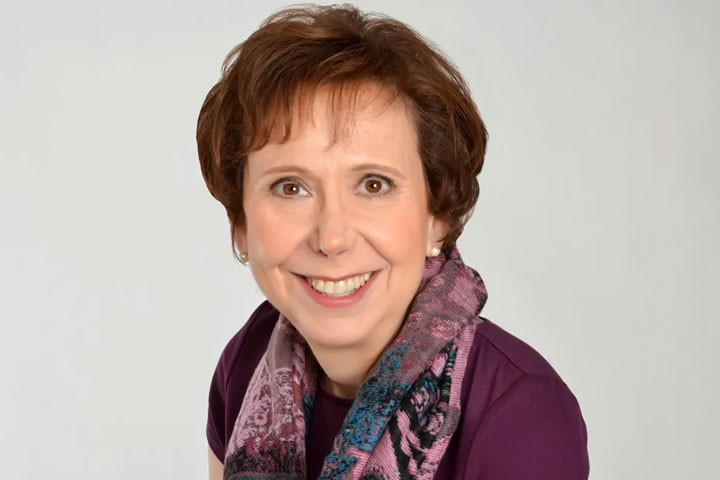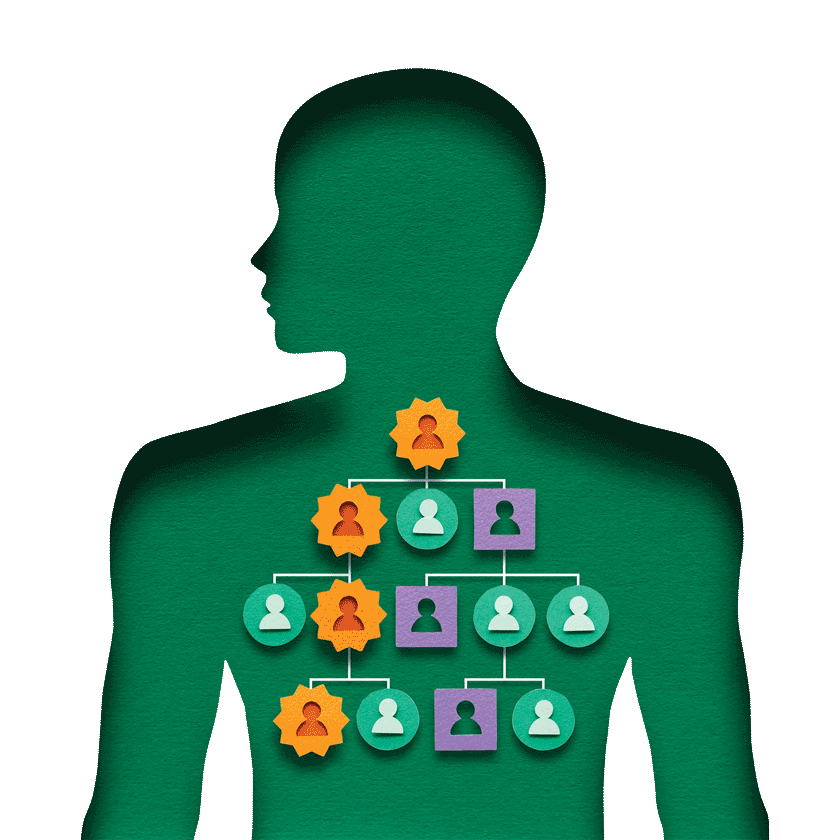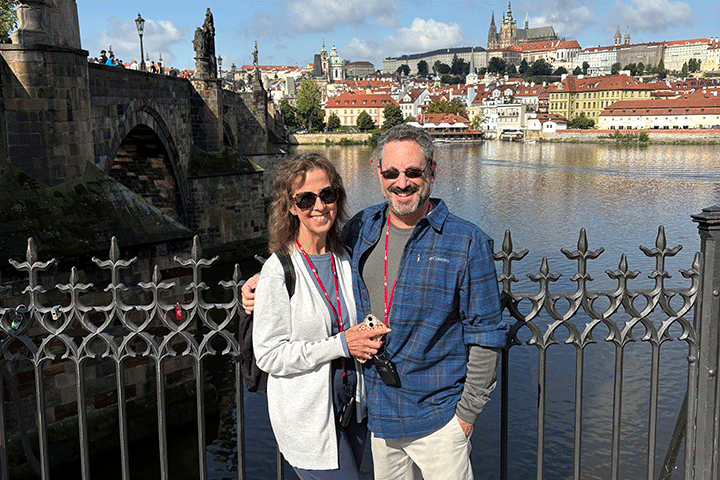My BRCA2 Mutation Turned Out to Be Both the Curse and the Cure

- BRCA2 gene mutation
- Early detection/regular screening
- Proton beam radiation
- Alkylating agent
- Stem cell transfusion
Disbelief, panic, sadness—that was my state of mind four years ago in March 2012 when I was diagnosed with pancreatic cancer.
My husband Mache was with me when I got the diagnosis and we cried together. We felt as though we had been blindsided, punched in the stomach, our wind knocked out. As doctors, we both understood all too well what the odds were and they weren’t good. We needed to figure out my best treatment option and do it quickly. This was a life or death challenge and the race against time had begun.
Unaware of the Link Between BRCA2 and Pancreatic Cancer
Because of my strong family history for ovarian cancer, I had been tested for the BRCA gene mutation as soon as testing was available. When it came back positive for BRCA2, I had my ovaries and tubes removed and underwent regular breast cancer monitoring with alternating mammograms and breast MRIs. But I never paid much attention to the association with pancreatic cancer. I had heard it mentioned at a medical meeting, yet my take-home message was not to worry because the risk was thought to be low. Today we know this is not the case. Recent data suggest that the risk of pancreatic cancer could be elevated as much as 82 times in males and 14 times in females who carry a BRCA2 mutation. Had I known this, I might have realized my persistent gastric reflux that didn’t respond to antacids was an early warning. My body was talking but I wasn’t listening.
I was lucky that I decided to see my internist rather than ignore new symptoms that my body was shouting at me. After all, I had just had a normal annual exam a few months earlier; but things were changing. I started rapidly losing weight – about a pound a day. I was extremely tired and my stools were becoming lighter in color and began to float. After examining me, my doctor sent me directly from his office to get an abdominal ultrasound. It showed a dilated duct. A CT scan done the following day revealed my worst fear, a tumor at the head of my pancreas. The clock was ticking.
I immediately contacted Dr. Carlos Fernandez, the surgeon who had operated on my father years before, and hand-delivered my scans to his office at the Mass General Hospital. I scheduled a consultation for a few days later. Following Dr. Fernandez’s recommendation, I had an ultrasound-guided biopsy of the tumor to establish the diagnosis. It revealed the worst scenario, pancreatic adenocarcinoma.
Chemoradiation, Then Surgery
A staging laparoscopy was scheduled to see if there were any distant metastases. Fortunately, none were seen and I was eligible for proton beam radiation. I participated in a Phase II Study of Neoadjuvant Proton Radiation Therapy with Capecitabine and Hydroxychloroquine at MGH under the supervision of Dr. Theodore Hong and received five doses of radiation. The proton beam therapy was very well tolerated, but I discontinued the hydroxychloroquine after the radiation because of nausea and my concern about potential side effects to my eyes.
Several weeks after proton radiation therapy, I had a Whipple procedure performed by Dr. Fernandez. I was discharged after a week and had an excellent recovery. Since a positive hepatic artery node was found at surgery, chemotherapy was essential.
BRCA2 Directs Chemotherapy Choice
About six years earlier, I had watched my father, a brilliant pediatrician, suffer with a similar protocol that was being recommended for me, and I did not want to follow that path. So, I sought an innovative approach based on my genetics. Since I was BRCA2+ it seemed that an alkylating agent would be my best option. BRCA2+ cancer cells have defective DNA repair and are extremely sensitive to alkylating drugs. The main side effect from the alkylating agent would be bone marrow toxicity that could be reversed with an infusion of my own bone marrow stem cells.
A month after surgery I underwent this treatment. My peripheral stem cells were collected and frozen as back-up. I received a dose of an alkylating agent followed by a second dose about two months later, and a stem cell transfusion two days after that.
I have been followed regularly with CT scans and most recently an abdominal MRI and lung CT scan, and there is no evidence of disease four years later. Ironically, my BRCA2 mutation seemingly has turned out to be both the curse and the cure. I am glad to have the opportunity to share my story because I feel it is important to raise awareness about the BRCA2 mutation and its association with pancreatic cancer. Imaging tests are available that can detect early-stage pancreatic cancer when it is still highly curable with surgery. I would urge people with BRCA2 mutations to talk with an expert in the field of pancreatic cancer about getting regular screenings.
Watch Sharon tell her story in “The SHARON Trial.“






